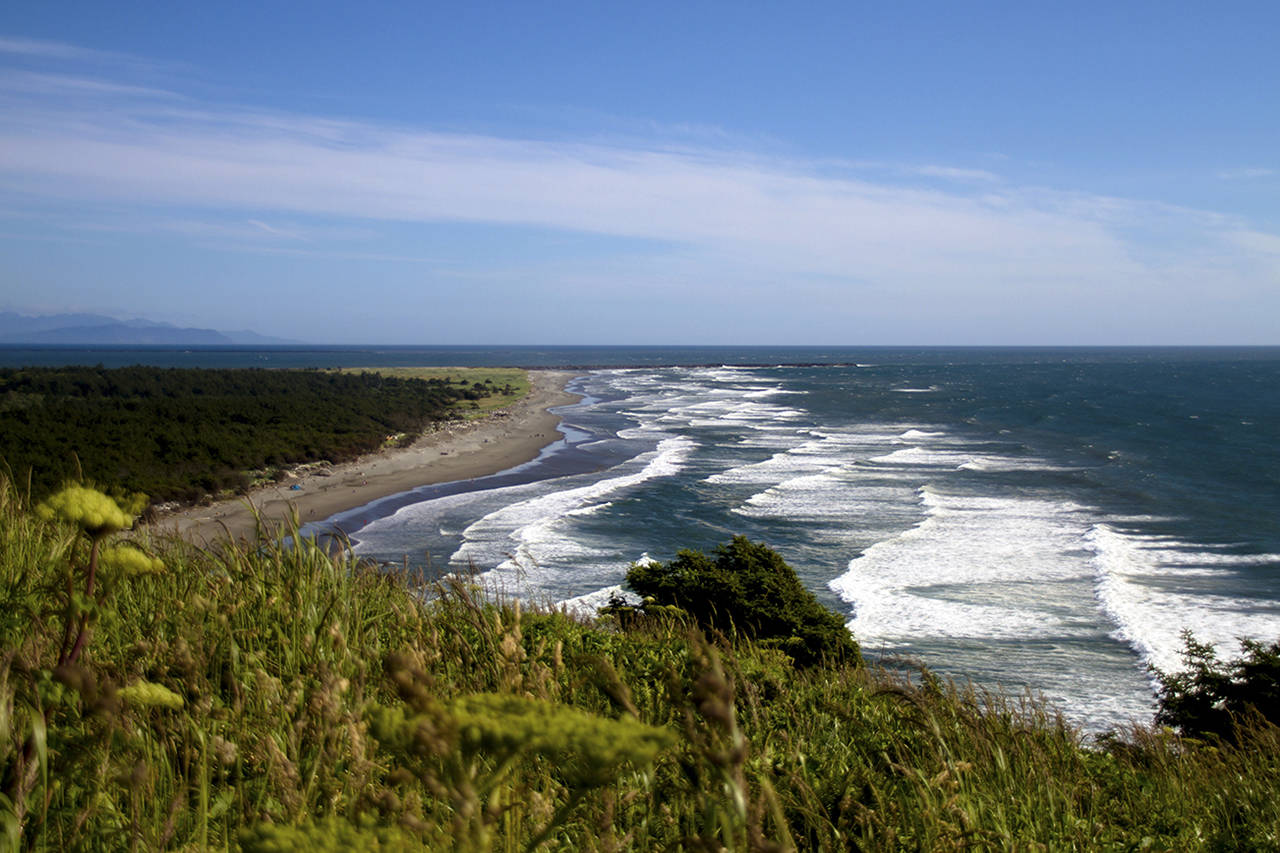By Hugh Barrett
WSU Master Gardener
During the last Ice Age, which ended about 15,000 years ago, ocean levels were about 350 to 400 feet below where they are today. The sand spits at the mouths of Chehalis and Columbia rivers didn’t exist then — or, if they did, they were far to the west where the sediment loads of the two rivers met the sea. With the ending of the Ice Age, as the continental and alpine glaciers melted and ran to the ocean, the ocean levels rose to our current sea level.
One of the roles of rivers is to carry sediment — rock, gravel, sand, silt and clay. From the weathering and eroding uplands, they drain eventually to the ocean. By the time the Columbia and Chehalis rivers reach the ocean, their load of rocks and gravels has dropped out in the slow waters of their estuaries, where the current no longer has the power to move them. What is left in the river’s flow are sands, silts and clays to be sorted by ocean currents, wind and waves.
The silt and clay are light and easily suspended in the vigorous ocean currents and can take a very long time to settle on the sea floor. But the sand — the subject of this article — is just the right size and shape and weight to be carried along the coastline by the currents and wave action, and deposited to create our beaches and sand spits.
Those of us who garden in the raw dunes of these recently deposited sands — or on older, forested dunes along the coast — have a set of unique conditions to address in our endeavor to create a healthy and productive garden.
After a career in the Soil Conservation Service, working with farmers and ranchers in the deserts of the Far West, I figured I had a pretty good understanding of soils. I had come to believe that sands, wherever they were, readily accepted water; whether it came as rain or from the end of a garden hose, water would immediately soak into the ground.
But when I moved into my place in a forest clearing on the Long Beach Peninsula, I was proved wrong. I learned rather quickly that in the summer, when the sand is dry, it is water-repellent. Water from the garden hose would puddle on the surface.
Before long, I recognized that this soil, as sandy as it was, had lain under a forest canopy for hundreds of years. The waxy coating of the conifer needles may have accumulated on the forest floor. After checking with a soil scientist friend, we decided that was the case: It was the waxy coating on those long-gone needles that had permeated the soil surface and acted to repel water.
We know that once the sand becomes wet, it will take water; and after several months of winter rain, it takes water readily. So, the trick becomes retaining that surface wetness. How do you do that? Adding surface mulch to help prevent the surface from drying out from the wind and the heat of the sun is the best way. Covering the soil surface with compost, leaves, lawn clippings (if you don’t use herbicides), coir, peat moss, or other commercial mulches should take care of that.
But once you’ve got the conditions that promote the passage of water into the sand’s surface, you realize these sands don’t hold much water, if any. That’s because sand has the lowest water-holding capacity of any soil texture. The solution: organic matter! Try to incorporate plentiful organic matter into the root zone of your garden. That will hold soil moisture and make it available to plant roots in the long term.
The addition of organic matter serves another important function: When water passes quickly through these sands, it takes plant nutrients and fertilizers along with it. The chemical properties of organic matter enable it to attract and retain plant nutrients, making them available to valuable soil microorganisms and the plants as well.
Think of your sand as a blank slate that, with time and effort, can become your own hand-crafted growing medium.
* * *
The 2019 Grays Harbor Home and Garden Show is coming up May 18-19 at the Elma fairgrounds. Admission and parking are free.
Hugh Barrett is a WSU Master Gardener living in Pacific County. He graduated Master Gardener training in 2014 and is the current president of the Master Gardener Foundation.


